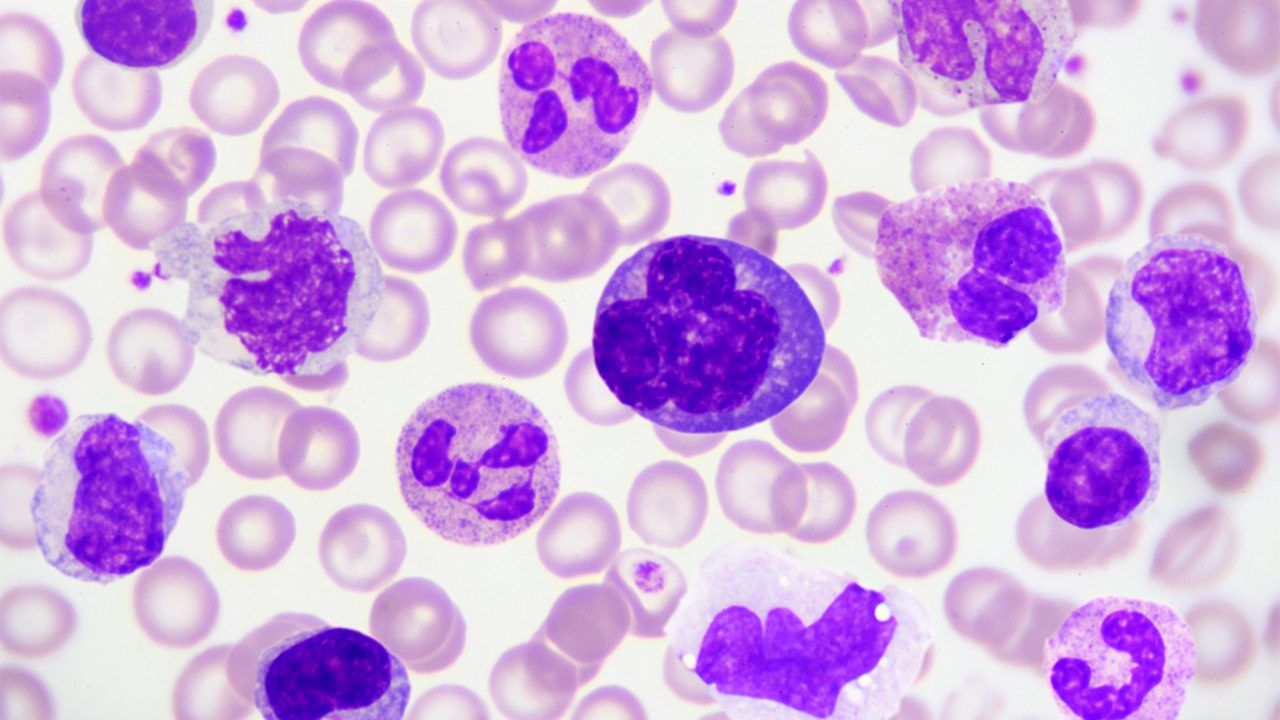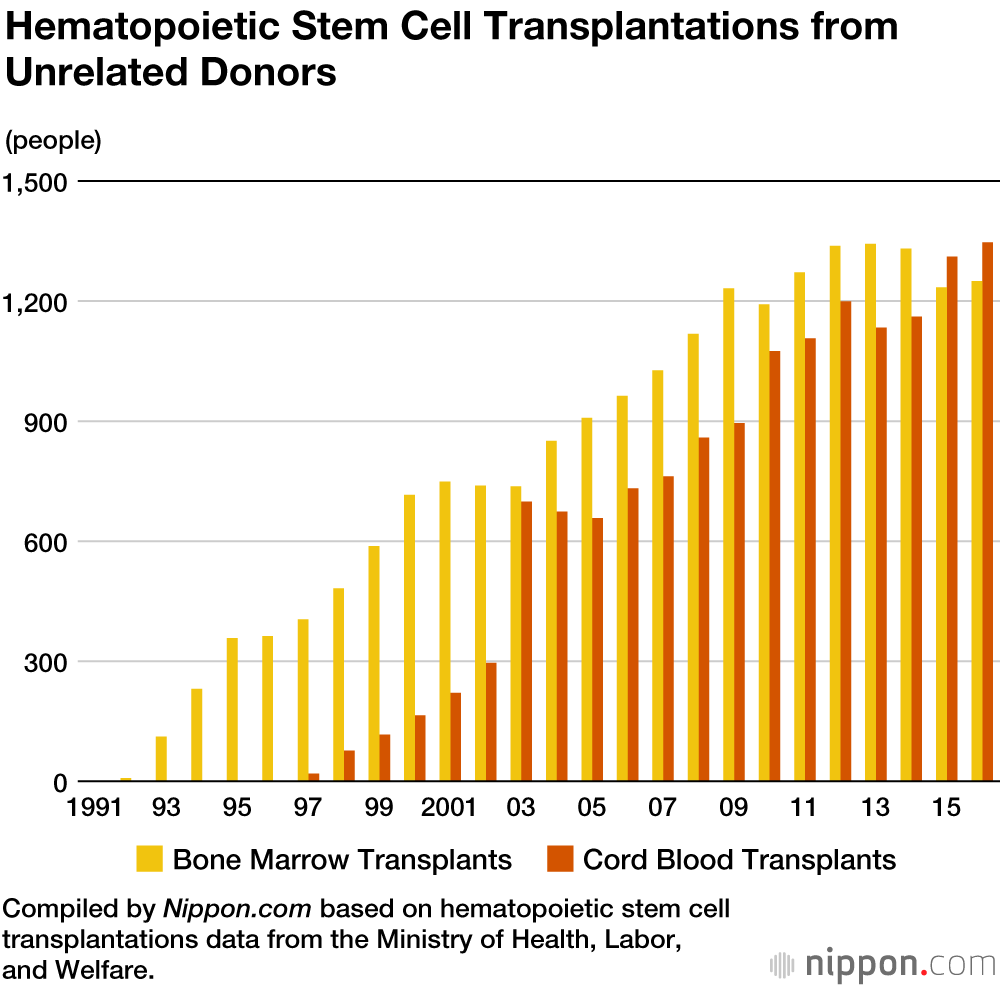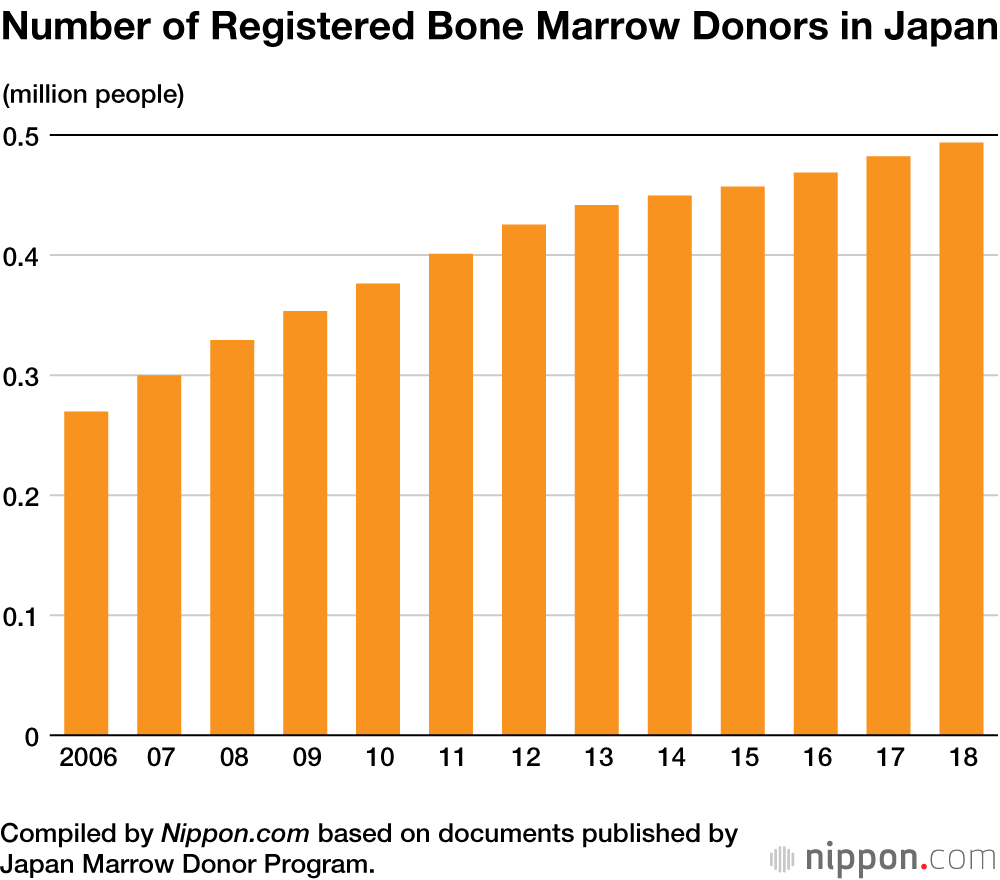
Wider Transplant Options Boosting Treatment of Blood Cancers and Immunodeficiency Diseases in Japan
Health Science- English
- 日本語
- 简体字
- 繁體字
- Français
- Español
- العربية
- Русский
For blood cancers, such as leukemia, and immunodeficiency diseases that are difficult to treat with regular chemotherapy and immunosuppressive therapy alone, a treatment known as hematopoietic stem cell transplantation can be given to assist in complete recovery. There are two main categories—bone marrow transplants and cord blood transplants—both of which involve replacing diseased blood cells with healthy ones. Since 2010, more than 5,000 hematopoietic stem cell transplantations have been conducted each year (including autografting, where the patient’s own stem cells are collected in advance and used). Approximately 2,500 of these transplantations use unrelated donors.
The first bone marrow transplant in Japan was conducted in 1974. It is necessary for the donor’s and the patient’s human leukocyte antigen (HLA) markers to be a match, so for initial transplants, the focus was on finding donors among siblings or other close blood relatives as they had a 25% chance of being a match.
If a related donor could not be found, then unrelated donors were sought. However, the probability of locating such donors on an individual basis can range anywhere from one in several hundred to one in tens of thousands, making it a very difficult task. Due to this, from the late 1980s onwards, patients’ family members and those with experience of transplants worked to establish bone marrow donor programs in different parts of the country, and in 1991 the Bone Marrow Transplant Promotion Foundation was launched, the forerunner of the Japan Marrow Donor Program. The first bone marrow transplant using an unrelated donor was conducted in January 1993 and this opened the way for this type of transplant.
In 1999, the Japan Cord Blood Bank Network was launched and cord blood transplants are now rapidly increasing. Cord blood is collected from the umbilical cord immediately after birth, so there is no need to rely on people actively making donations and there is not the same requirement for exact type matching that there is with bone marrow transplants. The discovery of hematopoietic stem cells in cord blood was made by the Japanese doctor Nakahata Tatsutoshi, who currently advises the Center for iPS Cell Research and Application at Kyoto University). The world’s first cord blood transplant was performed in France in 1988 and the first in Japan was in 1994.
As of the end of 2018, there were 493,627 donors registered in Japan’s bone marrow donor program. Of these, 0.9% were in their teens, 15.0% in their twenties, 27.6% in their thirties, 42.9% in their forties, and 13.6% in their fifties (registration is open to people aged 18-54).
While the number of registered donors in Japan is increasing annually, it is still low when compared to the 7.83 million in the United States, 6.06 million in Germany, 3.55 million in Brazil, and 0.82 million in China. The more registrants there are, the smoother the matching process between patients and donors is, making it possible to shorten the waiting period before treatment can begin.
(Country data compiled from the first issue of the Japanese Red Cross Society hematopoietic stem cell transplantation public relations magazine BANK! BANK!)
(Translated from Japanese. Banner photo © Pixta.)

